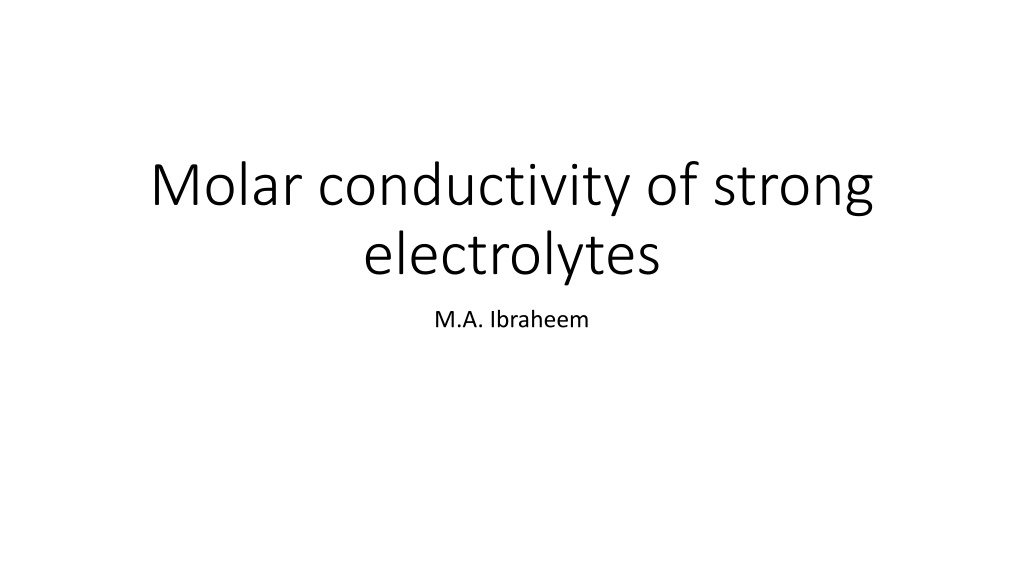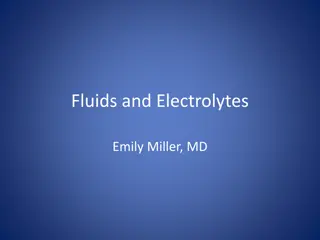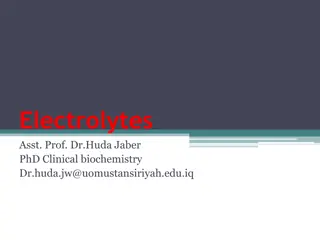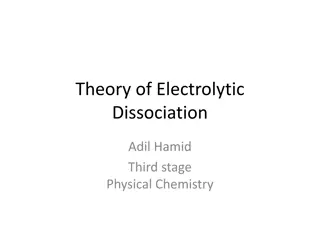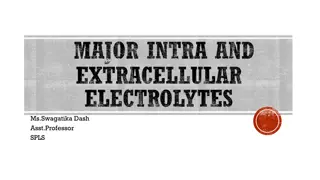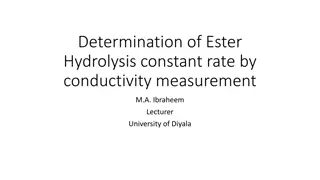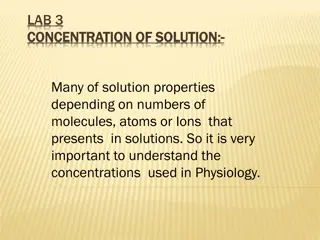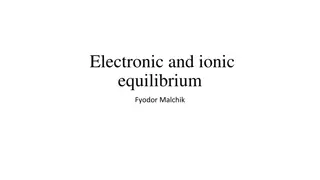Understanding Molar Conductivity of Strong Electrolytes
Strong electrolytes are materials highly dissociated in water, leading to conducting solutions with high molar conductivity. This article delves into the concept, calculation methods, and experimental procedures for determining the molar conductivity of strong electrolytes using examples of NaCl, KCl, and NaNO3 solutions. Through experimental steps and plotting graphs, the maximum molar conductivity (?m) is determined, providing insights into solution conductivity behavior with varying concentrations.
Download Presentation

Please find below an Image/Link to download the presentation.
The content on the website is provided AS IS for your information and personal use only. It may not be sold, licensed, or shared on other websites without obtaining consent from the author. Download presentation by click this link. If you encounter any issues during the download, it is possible that the publisher has removed the file from their server.
E N D
Presentation Transcript
Molar conductivity of strong electrolytes M.A. Ibraheem
Introduction Materials are considered as strong electrolytes if it highly dissociated and give very conducting aqueous solutions. The high conductivity of such solutions is as results of easy dissociation inside the water to its ions, therefore the molar conductivity of such is also high. These type of electrolytes are completely ionized at all dilutions but when farther dilution is proceeded the conductivity will reach to point where beyond that any farther dilutions will not increase the molar conductivity. At that point the maximum molar conductivity can be achieved which is denoted as ? ?is calculated from Kohlrausch equation as below Where ?= ? ? ? .. 1 https://www.coursehero.com/file/13442344/PDF-Electrochemistry-I/
When the molar conductivity is plotted against the square root of the concentration we will get a straight strike or line with a negative slope The intercept after extending the curve will give us the value of highes value of molar conductivity or ? as it shown in the figure
Procedure 1. Prepare three solutions of (0.1M) of NaCl, KCl and NaNO3 in 25 ml volumetric flask 2. Prepare four diluted solutions of 250 ml of each as it listed in the below table ,from the solutions prepared in step 1. NaNO3 1X10-4M NaCl KCl Table No 1 shows list of the concentrations of of NaCl, KCl and NaNO3 1X10-4M 1X10-4M 2X10-4M 2X10-4M 2X10-4M 4X10-4M 4X10-4M 4X10-4M 8X10-4M 8X10-4M 8X10-4M 3. Measure the conductivity of each solutions and calculated the specific conductivity ( constant cell is 0.1 cm-1) and molar conductivity as it illustrates in the table 2 bellow
Procedure ? ?? ? Solution C L 1X10-4M NaNO3 2X10-4M 4X10-4M 8X10-4M 1X10-4M NaCl 2X10-4M 4X10-4M 8X10-4M 1X10-4M KCl 2X10-4M 4X10-4M 8X10-4M Plote the Molar conductivity ? against the ? , then extend the straight part of the curve to the y axis and obtain the value of ?, to get accurate results use excel to draw the curve and intercept function.
